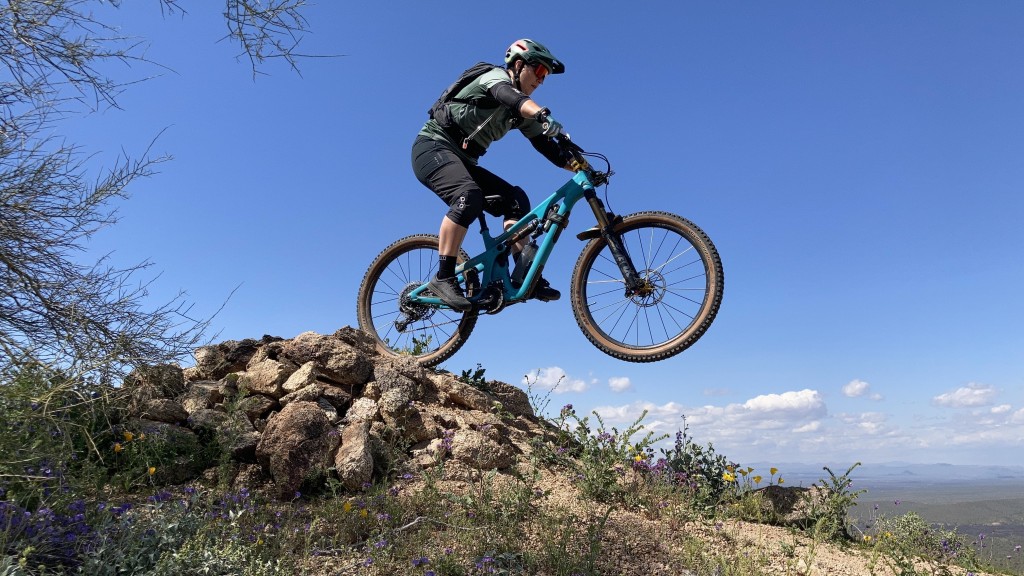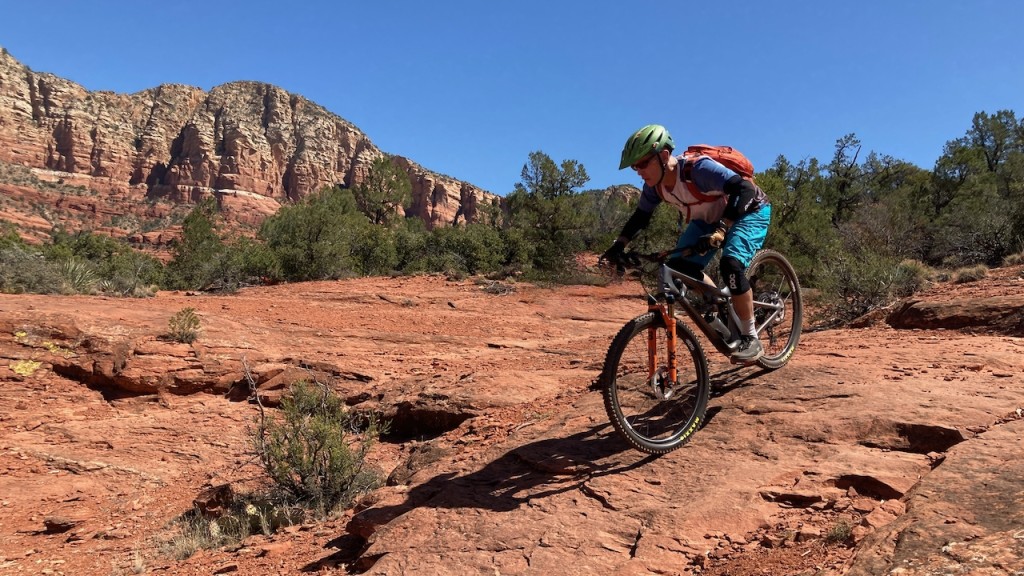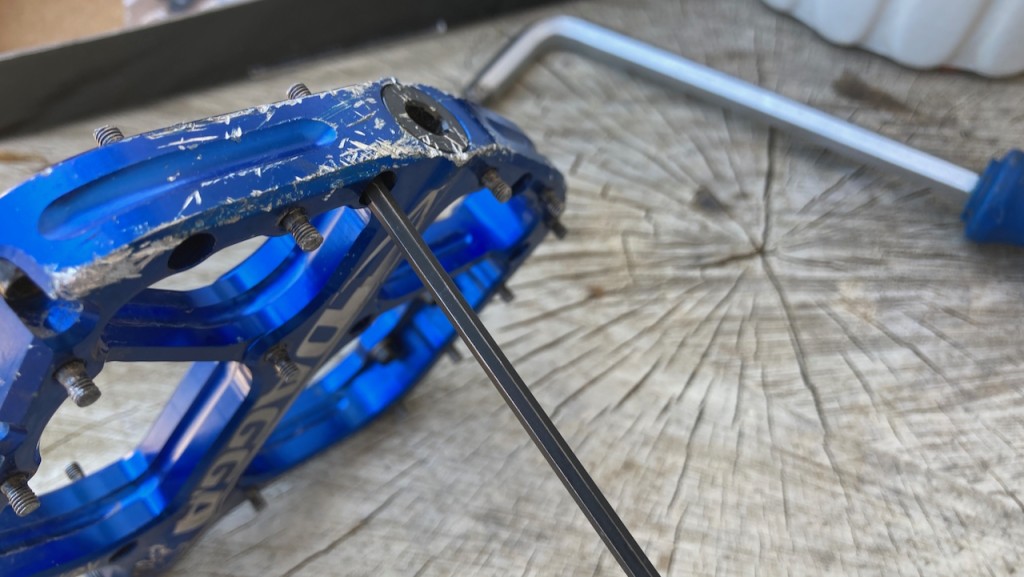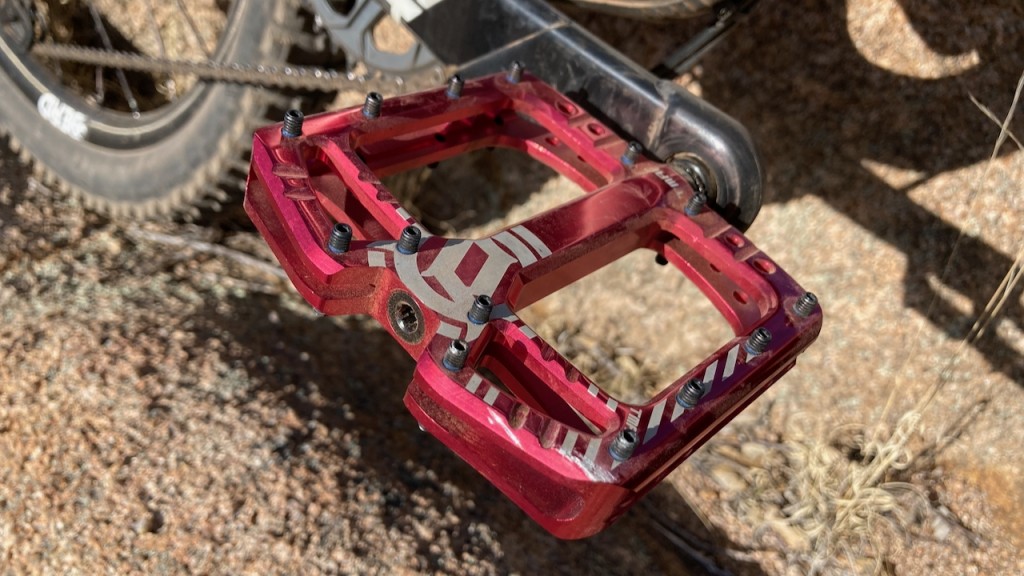Our expert testers put 24 of the top-rated and most anticipated mountain bike flat pedals to the test on trails in Arizona, California, and Nevada. We tested all the pedals on gnarly downhill trails, flowy single tracks, and fun backyard jumps. We wanted to see how each pedal performed on different terrain, including slow-speed tech trails, big jumps, steep climbs and switchbacks, high-speed trails, and adverse weather conditions to provide a detailed analysis of each pedal. We compiled our notes, took measurements, and analyzed each pedal, logging over 350 miles and climbing more than we would like to remember.
Grip/Traction
To test the grip of each pedal, we rode them on various bikes, trail types, and weather conditions. We examined the type of pins used on the pedal, their placement, length, and design. We used different brands and models of shoes with each pedal to see how the pedal interfaced with the shoe's sole. We also tested each shoe on terrain, including flow trails, chunky descents, jumps, and drops to see how well the pins held on s. We also tested in conditions from dry and dusty to wet and muddy to determine if the pedal's grip was affected. Shoes that offered outstanding grip scored higher in this metric than those with less grip. We also noted how much grip each pedal has in its individual review.
Platform
A mountain bike flat pedal's platform provides a space to support your foot and is also one area that riders complain about when they talk about pedal strikes. Thick and wide pedal platforms can be more prone to hitting roots, rocks, and objects on the side of the trail versus those that are thinner. We measure each pedal's platform dimensions, including its length, width, and thickness at the leading and trailing edges and axle with a digital caliper, and compare them to the manufacturer's specs. We also carefully look at the pedal body's profile and pin placement to verify its shape. On the trail, we focus on the support and balance of each pedal, both fore and aft and side to side. We also take note of the pedal's thickness or width and whether or not it affects cornering and pedal strikes. For this metric, pedals are scored based on their thickness, how the thickness affects our riding, and how supportive the platform is for a variety of foot sizes.
Pedal Mobility
Pedal mobility refers to how freely the pedal spins on the axle and how well you can reposition your foot on the pedal. A simple spin test is performed with the pedal in hand and again with the pedal mounted to the crankarm. This allows us to see how freely the pedal spins on its axle and how much drag there is. A mountain bike flat pedal's bearings should have some amount of drag to them so they do not freely spin when unweighted. To supplement this test, we also pay close attention to the position of the pedals when removing and replacing the foot while riding at the bike park, dirt jumps, and through technical sections of the trail. Pedals with a smooth and moderate spin rate and mobility score higher in this metric.
Service
Each set of mountain bike flat pedals is disassembled and reassembled to determine how easy it is to service by the home mechanic. We follow service instructions or videos provided by the manufacturer for this task. If no instructions or videos are provided, a pedal will score poorly for this metric, as we do not assume the user knows how to service their pedals without instructions.
In general, we extract the axle from each pedal and note the required tools. We also consider if the tools are specialized or more generic. We remove the pins from each pedal to look more closely at their design and see how easy they are to replace and if their heads are prone to being stripped when removed. We also make note of the availability of rebuild kits and other parts like traction pins and spindles. For this metric, we consider the ease of servicing the pedal and the tools required, giving higher scores to those who are both easy to service and don't require special tools.
Weight
Each pair of mountain bike flat pedals is weighed on a digital scale for consistency and comparison to the manufacturer's claimed weight. While weight may not be the largest consideration for your next flat pedal purchase, there is a considerable difference in how much pedals weigh based on their construction and materials used. Pedals weighing less earned higher marks, while those weighing more earned lower marks in this metric. However, weight does not always mean better, and in the case of pedals, it may mean lower-quality parts or parts that are not serviceable were used.
Conclusion
Each pedal in our test went through the same rigorous test process and was put through its paces and show scratches, dents, and bent pins. Rest assured that these pedals have been put through the wringer to provide our expert recommendations for the best mountain bike flat pedals.








